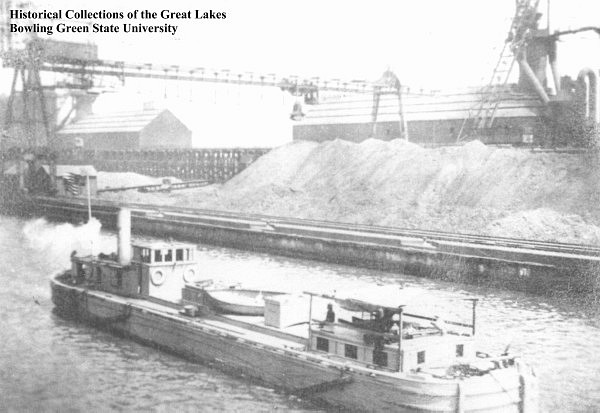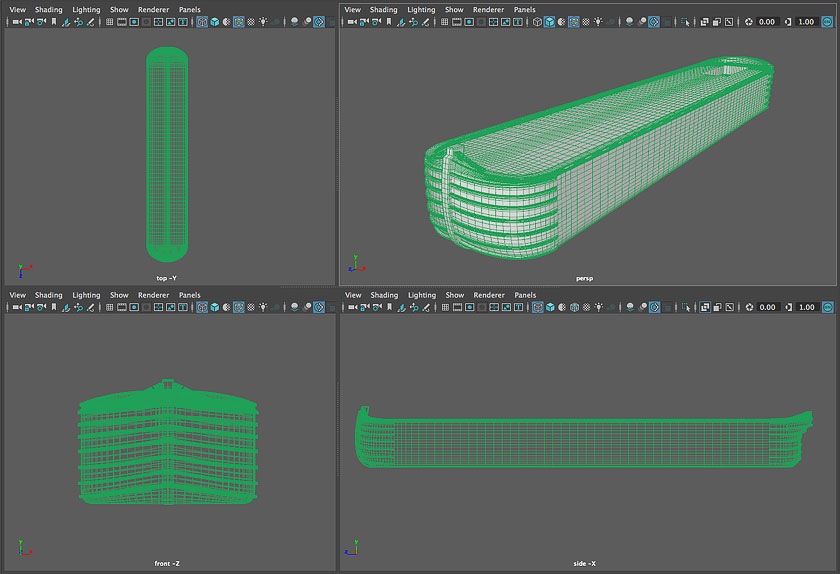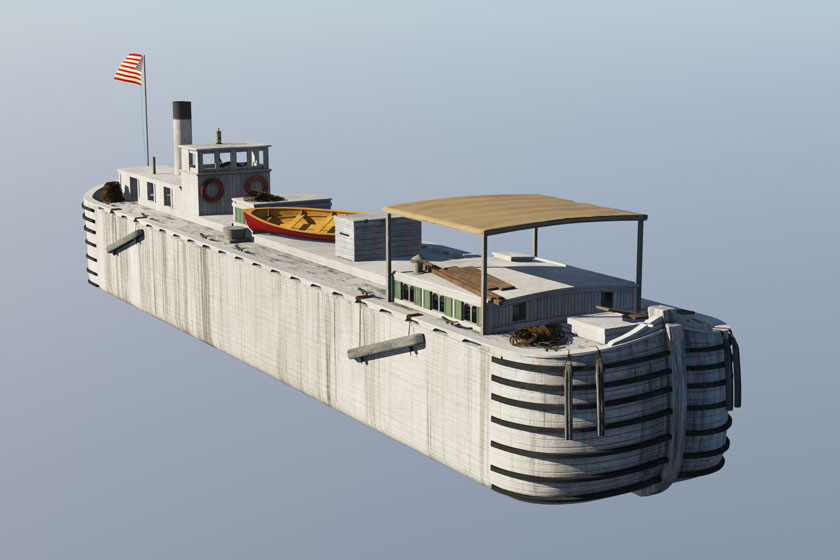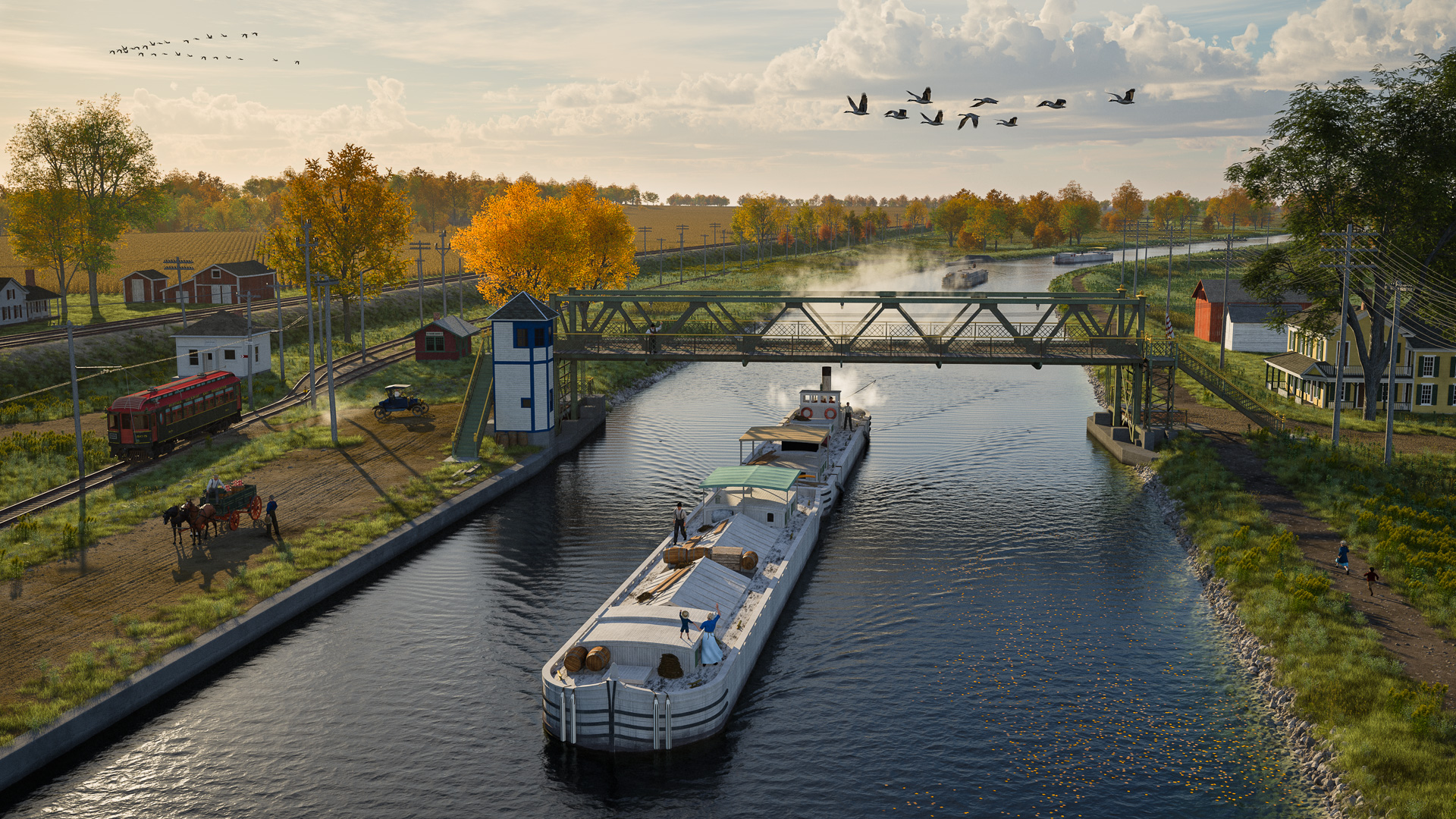
The end of the animal-powered canal boat, after decades of encroachment by steam vessels, came quickly.
Primitive steamboats had been sighted on the canal since the 1840s but would remain a novelty for most of the century. Canal enlargement in the mid-19th century and improved steamer designs gradually changed things, though, and around 1880 the first practical steamers were introduced. The advantage of steam power was immediately apparent. While animal-powered fleets were limited to two vessels – so-called doubleheaders – a single steamer could push one boat (a consort) and tow up to five or six more.
The final Barge Canal enlargement of 1908–1918 permanently settled things. As each new section came online the towpath itself began to disappear. When the enlargement was completed, only powered boats could navigate the entire distance between Buffalo and Albany.
In 1916, the date of my scene, most steam-powered boats on the canal were of two types, both built of wood: tugboats and steam canal boats. The U.S. government’s 1884 Report on the Ship-Building Industry of the United States helpfully includes a diagram of a steam canal boat, a functional design (besides pushing and towing unpowered boats, it could carry its own full cargo) that remained in service well into the 20th century.

This was the design I wanted for my 3D model – new technology (steam power) grafted onto traditional design (the wooden laker hull). Now I just needed to find a specific vessel on which to base the model.
Unfortunately, period photographs of Erie Canal steamers are about as rare as hen’s teeth. Repeated online searches turned up nothing.
Eventually I learned to combine two sources: the List of Merchant Vessels of the United States, published annually by the Department of Commerce, and the Great Lakes Vessels Online Index, maintained by Bowling Green State University. The 1916 edition of the List included around 40 vessels designated as “Scb,” or steam canal boat. Searching for each of these on the Bowling Green site resulted in a handful of matches – some of which included photographs.
For various reasons, including the clarity of the photo and strong evidence that the boat operated in this area, I chose a steamer named the Ashford. It is pictured at the top of this post.
According to the Index, the Ashford was 95 feet long and 17 feet 8 inches wide. It was built in 1883 in Buffalo and sank in the Barge Canal near Schenectady in November 1919 – “a total loss.”
Filling in the blanks
Online searches turned up several references to the Ashford. The earliest was a notice from the Buffalo Express reprinted in the August 22, 1883 issue of The Coal Trade Journal, which identified the Ashford as one of three canal steamers constructed by the Rochester and Pittsburgh Railroad Company.
The Rochester and Pittsburgh Railroad Company was founded in 1881 to haul coal from western Pennsylvania to Rochester and Buffalo. That was as far as its lines extended. The canal boats were to be used to ship the coal to the lucrative New York City market. The company’s 1883 annual report explains that land purchased in Buffalo will be developed into a railyard, but also that
. . . We have made two slips to accommodate eight canal boats . . . and have constructed coal shutes [sic] . . . so that coal can be shipped in canal boats at minimum cost.
The assumption that the Erie Canal was always in competition with the railroads, then, is an oversimplification. Things were more complicated, especially early on when hundreds of railways were being formed and struggling to grow and survive. In this case the R&P’s fledgling rail barons were merely attempting to leverage an existing resource – the canal – to give them a leg up on the competition – other railroads.
Unfortunately, things didn’t work out as planned. The Rochester and Pittsburgh went bankrupt and in 1887 all of its assets were sold. The rolling stock and track were converted into the Buffalo, Rochester and Pittsburgh Railroad, which would be absorbed into the Baltimore and Ohio Railroad in 1932.
The company’s steamers apparently went their separate ways. The next mention of the Ashford that I can find is in the 1899 edition of The Blue Book of American Shipping, which gives the owner as one William Barker of Buffalo. The following year the Ashford is listed as one of two steamers owned by William J. Warwick, also of Buffalo. Ten years later the Ashford would be sold to Joseph A. Hutton of Rondout, on the Hudson River. Hutton may have been the final owner – I could find no others listed – and since this was the only steamer he owned, perhaps he was the skipper as well. Was he on board in November 1919 when the Ashford sank near Schenectady? It would be nice to know, but here the trail grows cold.
Here’s an interesting postscript:
In September, 1889, the Bishop, a canal boat towed by the Ashford, collided with the F. W. Whalen, towed by the steamer Lizzie Crandal, while the two fleets passed each other a few miles west of the location pictured in my scene. Both the Bishop and the Whalen went down, and the owners of the Whalen sued the owners of the Ashford and the Bishop for damages.
The following year the District Court of the Southern District of New York dismissed the suit based on evidence that the Whalen had been on the wrong side of the canal at the time of the collision.

Rebuilding the Ashford
My sources for the model are a high-resolution photo of the Ashford (provided by Bowling Green University), and Robert E. Hagar’s excellent drawings of an 1870s-era laker, held by the Chittenango Landing Canal Boat Museum.
The photograph isn’t the best quality, unfortunately, and some detail (especially behind the wheelhouse) is impossible to figure out. As usual, my rule is to leave out details rather than make them up. (The model will be seen at a distance and the stern won’t be prominent, anyway.)

Once it’s finished the model is placed in the scene along with the three lakers. Our mighty fleet is at last under way.

